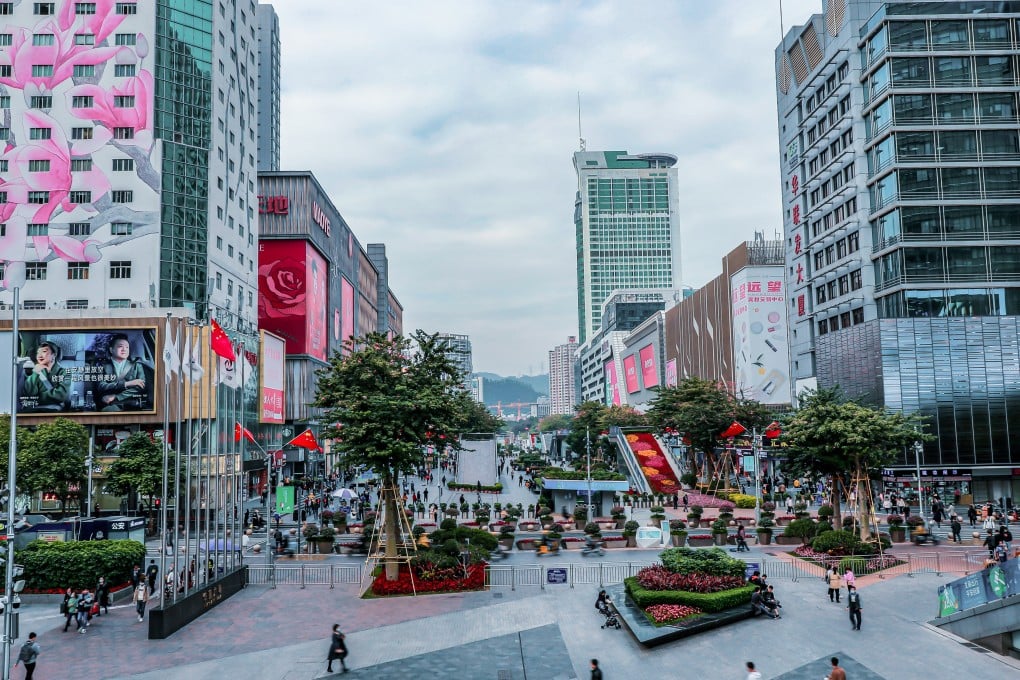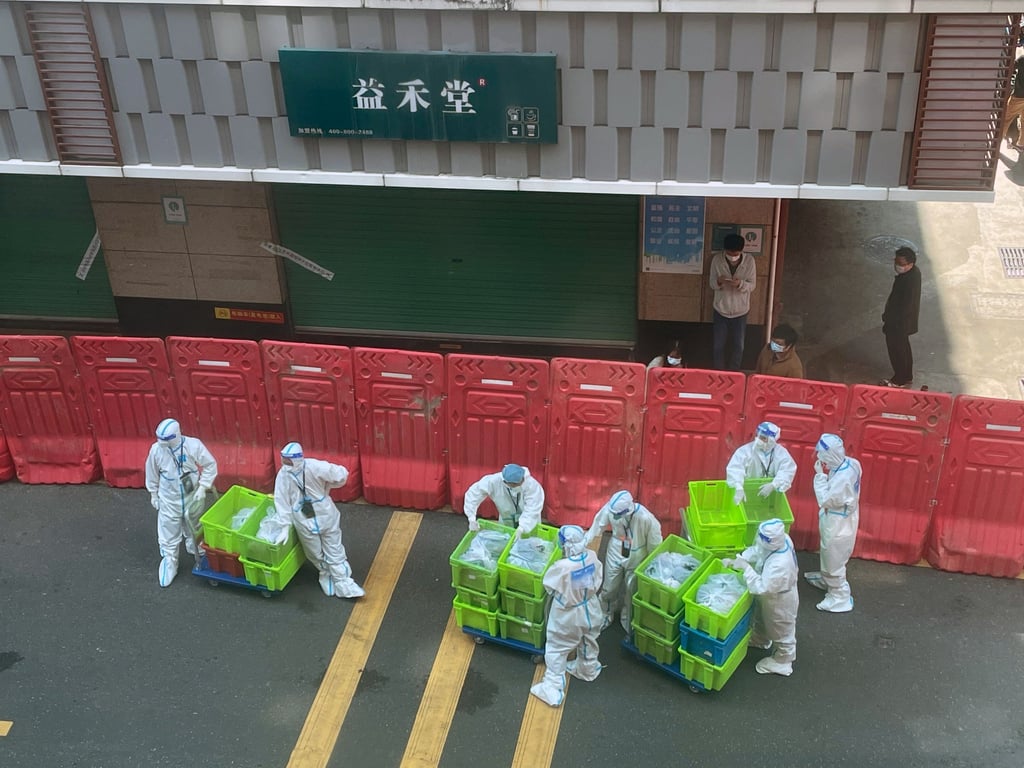Coronavirus: Huaqiangbei, world’s biggest electronics wholesale market, remains closed as hi-tech hub Shenzhen steps up battle against Omicron
- Business in Huaqiangbei was initially suspended for four days from last Thursday, after one confirmed Covid-19 case was found to have visited the area
- The electronics wholesale market is an important segment of Shenzhen’s hi-tech industry, which accounted for 20 per cent of the city’s GDP in 2020

Shenzhen, the richest city in southern Guangdong province, is conducting targeted lockdowns of various communities and office buildings, and massive testing among its 17.6 million residents, as well as requiring negative nucleic acid test results for all bus and Shenzhen Metro train passengers.
“The pandemic control authority of the [Futian] district will conduct scientific research and discuss reopening plans based on new development in the Covid-19 situation,” the Huaqiangbei community said. “Market managers, please appease the [affected] merchants and require them to take Covid-19 tests every day.”

The pandemic control team in Huaqiangbei said it had filed an application for the area to reopen last Saturday, but experts determined that risks remained high and postponed the resumption of business, according to the notice cited by market operator Huaqiang Electronics World.
The temporary closure affects an important segment of Shenzhen’s hi-tech industry, which accounted for 20 per cent of the city’s gross domestic product in 2020, according to official data. A number of residential buildings in Futian and Nanshan, two of the nine districts comprising Shenzhen, have already been put under lockdown, which has grounded tens of thousands of residents.